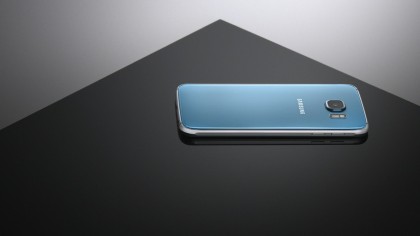Is the TV resolution revolution finished?
There's a lot more to Ultra HD than just the pixel count.
High Dynamic Range
"HDR is also very noticeable," says Gray, who thinks that the competing technology, RGB LED, will also flourish. "As the peak luminance goes up people visibly perceive an improvement in picture performance."
However, he does point out that ad breaks could get ruined in all-new ways; just as advertisers already turn-up the volume now, in future they'll likely also push the luminance to maximum to take advantage of HDR TVs.
"You might need to put your sunglasses on," says Gray.
However, there's no denying that HDR will prove really popular for watchers of soap and general TV.
Quantum Dot & Deep Colour
The fundamental tech behind Deep Colour is Quantum Dot, which has been pushed so far by LG. The subjective test results demonstrated that Deep Colour, too, is also worth buying, according to Gray, who says that cinema and wildlife photography benefit hugely.
"Deep Colour has real value and people can see the difference," says Gray.
Genre-specific tech
Look at that in the round and you've got a pretty splintered video ecosystem; the three technologies – HDR, High Frame Rate and Deep Colour – all find their sweet-spot in completely different genres.
Sign up for breaking news, reviews, opinion, top tech deals, and more.
Unlike with the introduction of HD, which was seen as a general improvement across the board, the move to the Ultra HD technologies is more complex.
For instance, Sky will want to film sports in High Frame Rate, but not Deep Colour. Soap operas will be filmed to take advantage of HDR, but High Frame Rate won't matter. Film directors and the makers of nature documentaries will prioritise Deep Colour. And so on.
Not all video is alike.
"Hollywood has known about all of this for a century, they've been shooting action sequences with very short depths of field to take away the blurred background and de-focus it," says Gray. "It allows the director to guide the viewer's eyes onto the action, because that's the only sharp bit."
Live sports isn't like that; everything needs to be sharp, otherwise there's no sense of presence.
Broadcasters wanting to offer Ultra HD – especially live TV – have so many more choices to make, and massively more data to handle than IP services like Netflix. Netflix can deliver in 4K already precisely because a lot of the video within movies and TV dramas is blurred to begin with, so can be easily compressed.
Nor is it consistent.
"The reality is that you can click the 4K button on Netflix, but bandwidth issues mean you're probably not watching it all of the time," says Gray.

Phones first
The Ultra HD video technologies might be trumpeted as TV-centric, but Gray thinks phone users will probably see them first.
4K tablets and 6.2-inch smartphones with over 700ppi screens will appear later this year, while a massive 200 million UHD smartphones are predicted to be sold during 2021 alone. By then there will already be 500 million 4K phones in use.
Now that's momentum.
"When we've got an Ultra HD ecosystem across TV, phones and tablets, content consumption is going to be very different to what it is at the moment," says Gray.
His research also shows Deep Colour, HDR and High Frame Rate technologies don't just work well on the small screen, but are actually more noticeable than on a huge TV. "Ultra HD in smartphones is going to be as big as Ultra HD in TVs," says Gray, "but it's about a lot more than just pixels."

Jamie is a freelance tech, travel and space journalist based in the UK. He’s been writing regularly for Techradar since it was launched in 2008 and also writes regularly for Forbes, The Telegraph, the South China Morning Post, Sky & Telescope and the Sky At Night magazine as well as other Future titles T3, Digital Camera World, All About Space and Space.com. He also edits two of his own websites, TravGear.com and WhenIsTheNextEclipse.com that reflect his obsession with travel gear and solar eclipse travel. He is the author of A Stargazing Program For Beginners (Springer, 2015),